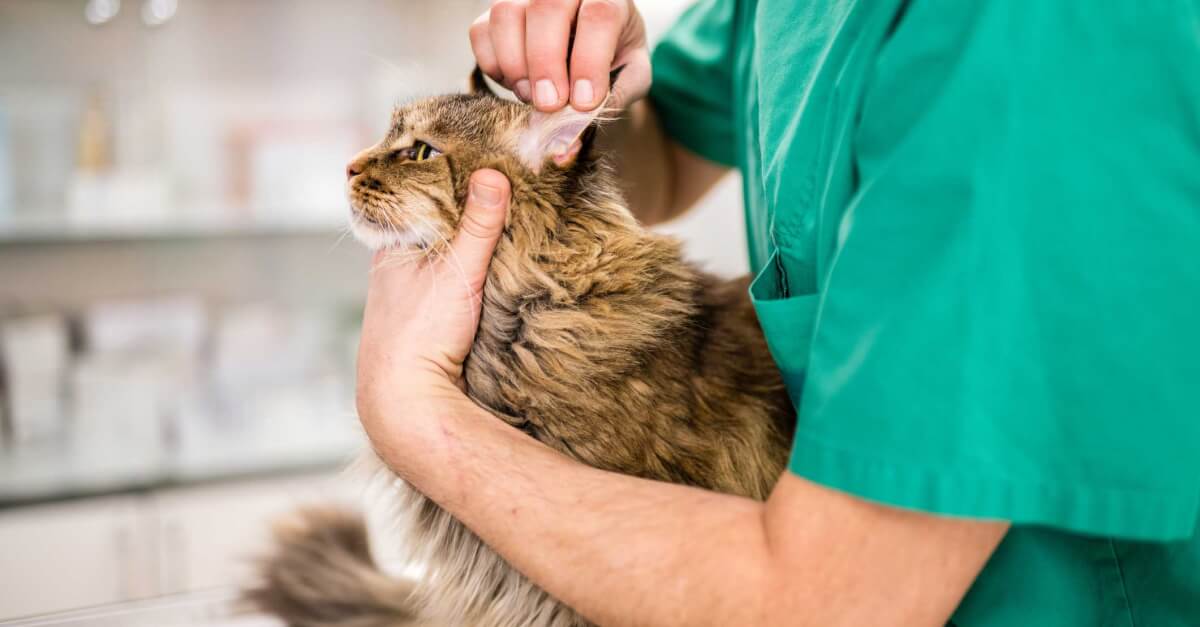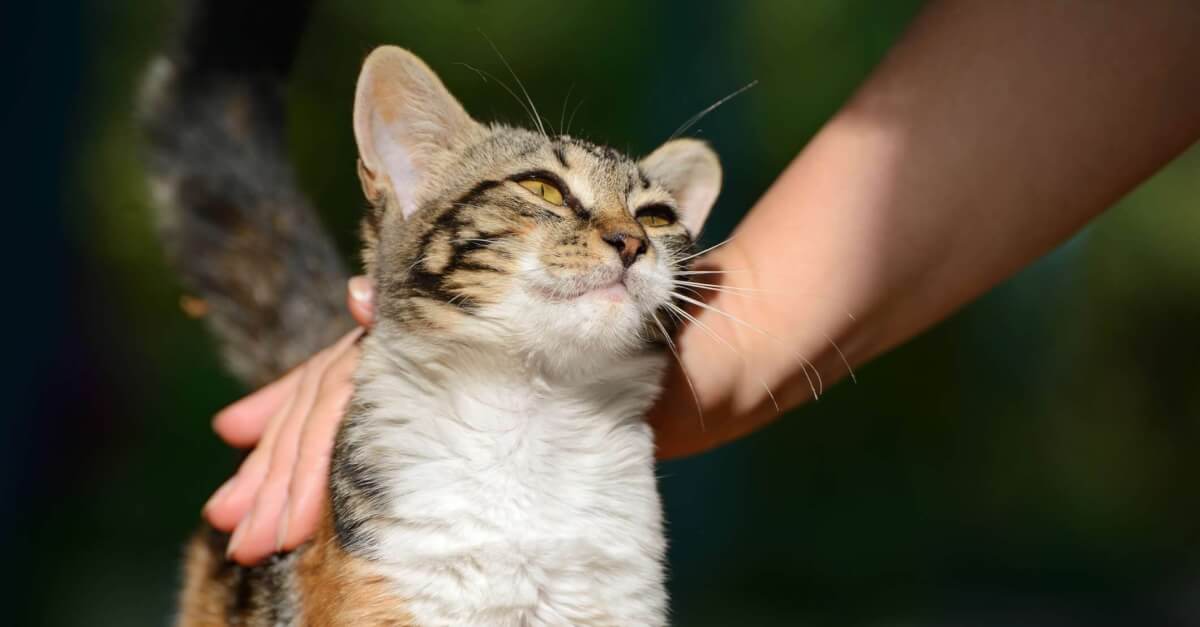If you’ve got essential oils and you’ve got cats, we’re going to bet that you love them both! But perhaps your cat doesn’t feel the same way. In fact, there’s a pretty good chance that your cats absolutely detest your EO affection and may be secretly plotting a way to mercilessly overthrow these tiny bottles reign in your home! It’s Game of Thrones—with cats.
So what’s the deal with EOs and cats?

Jokes aside, this is an incredibly important topic to discuss if you have feline friends in your home. Cats and essential oils are a potentially toxic mix. Doing something as seemingly innocent as diffusing some Peppermint to freshen up the air can have you rushing your kitty straight to the veterinarian’s office.
This blog is not intended to be a scare tactic to pressure cat owners to toss their oils. However, it is meant to educate and advise responsible and mindful use of your aromatherapy products in a home occupied by your precious kitty tenants.
How do essential oils impact your cat’s health?

Cats have unique bodies that can’t easily be compared to other mammals. Particularly, they lack a liver enzyme called glucuronyl transferase. Because of this, cats are not able to eliminate compounds through hepatic glucuronidation like most other mammals. So what does all that mean? In a very basic sense, it means that the lack of this important detoxification mechanism results in a slower elimination of certain compounds—if elimination is possible at all. Without the necessary enzymes to break down certain substances and effectively excrete them, it ultimately leads to the buildup of toxins in their bodies.
Cats are most sensitive to specific groups of essential oil constituents. This includes phenols and other compounds containing benzene rings, which we find in the essential oils of Wintergreen, Fennel, Peppermint, Tea Tree, Eucalyptus, and Marjoram (to name a few!). They are also extremely sensitive to ketones, such as Rosemary, Spearmint, Dill, and Sage. And unlike many other mammals, cats are sensitive to monoterpene hydrocarbons (terpenes), such as pinene and limonene. This means that both citrus and coniferous essential oils should absolutely not be used around cats.
Not only do we risk poisoning cats with essential oils as the toxins build up in their body, but simply inhaling the strong aroma of essential oils can cause some cats to suffer from a watery nose or eyes, burning throat, nausea, and difficulty breathing.
Different methods of aromatherapy present different concerns for your cat.

As a cat owner, you must be cautious using essential oils in your home. Active and passive diffusion can lead to respiratory irritation and toxin buildup. Although the teeny tiny droplets coming from our diffuser may seem small and harmless, they pose a great health risk for cats. The delicate and thin skin of a cat rapidly absorbs EO molecules, which their liver will then attempt to metabolize. The molecules may also collect on the cat’s fur, leading to ingestion when your cat begins grooming him- or herself. Applying essential oils topically on a cat, whether diluted or neat, can lead to immediate health emergencies that your friend may not be able to fully recover from.
Looking for symptoms of toxicity…

The buildup of toxins in a cat’s body can show up immediately or years down the road. If you notice any physical or behavioral changes in your cat and suspect an EO may be the culprit, please visit your veterinarian. Since, unfortunately, cats can’t speak our language, we have to maintain a watchful eye over our feline friends.
Symptoms of toxicity include, but are not limited to:
- Drooling
- Vomiting (not from hairballs)
- Tremors
- Ataxia (wobbliness)
- Respiratory distress (labored breathing, fast breathing, wheezing, etc.)
- Low body temperature
- Liver failure
Consult your vet right away if you have any concerns. But keep in mind that even with supervised care and plenty of fluids cats are still unable to completely excrete toxins from their body. This can result in permanently elevated enzyme levels and varying degrees of liver function.
Safe tips for using your essential oils with cats at home.

So does having a cat completely rule out your aromatherapy dreams? Absolutely not! As long as your dream doesn’t include using EOs on your cats, that is. Follow these simple tips to enjoy your oils while simultaneously keeping kitty safe!
- Diffuse in a well-ventilated room blocked off from your cat.
- Never diffuse in an enclosed room with your cat trapped inside.
- Store your EOs somewhere your cat cannot reach them to prevent accidental contact and/or ingestion.
- If applying diluted oils to yourself topically, avoid your cat for at least an hour. Do not pet them or let them lick
- Wash your hands after working with oils.
- When using EOs in cleaning products, do not allow your cat to walk on those surfaces until the EOs have evaporated. Absorption through paws or ingestion during grooming will increase your cat’s chance of poisoning.
- Inhalers, inhalers, inhalers! This might just be the perfect way to enjoy your oils without putting any cats in harm’s way!
Following these suggestions will help to responsibility minimize your cat’s exposure to essential oils and therefore decrease the likelihood of any toxins building up in his or her body.
Want to learn more about Pup & Pony? Well, you’re in luck! In this Plant Therapy Live video, recorded on April 12, 2019, Emilee Hughes (Certified Aromatherapist and the brains & beauty behind this new line!) and Retha Nesmith (Certified Aromatherapist and VP of Customer Experience) talk all about the blends, Paw Balm, and Paw Pal Diffuser, plus all kinds of customer questions! Watch below:
For questions regarding essential oils for dogs, please contact our Customer Service Team at CS@planttherapy.com. Your inquiry will be directed to our Certified Aromatherapists who have undergone specialized animal aromatherapy training.
Learning lots from our animal series? We sure hope so! Make sure to head over to our Safe Essential Oils Recipe group on Facebook to share your experiences!
Information collected from the following sources:
Bell, K.L. (2002). Holistic Aromatherapy for Animals: A Comprehensive Guide to the Use of Essential Oils & Hydrosols with Animals. Findhorn Press.
Morag, N. (2011). Essential Oils for Animals: Your Complete Guide to Using Aromatherapy for Animal Health and Management. Off The Leash Press.
Animal Aromatherapy Foundation Course with Kelly Azzaro
Practical Aromatherapy for Dogs Certification
Veterinary Medical Aromatherapy with Dr. Nancy Brandt



